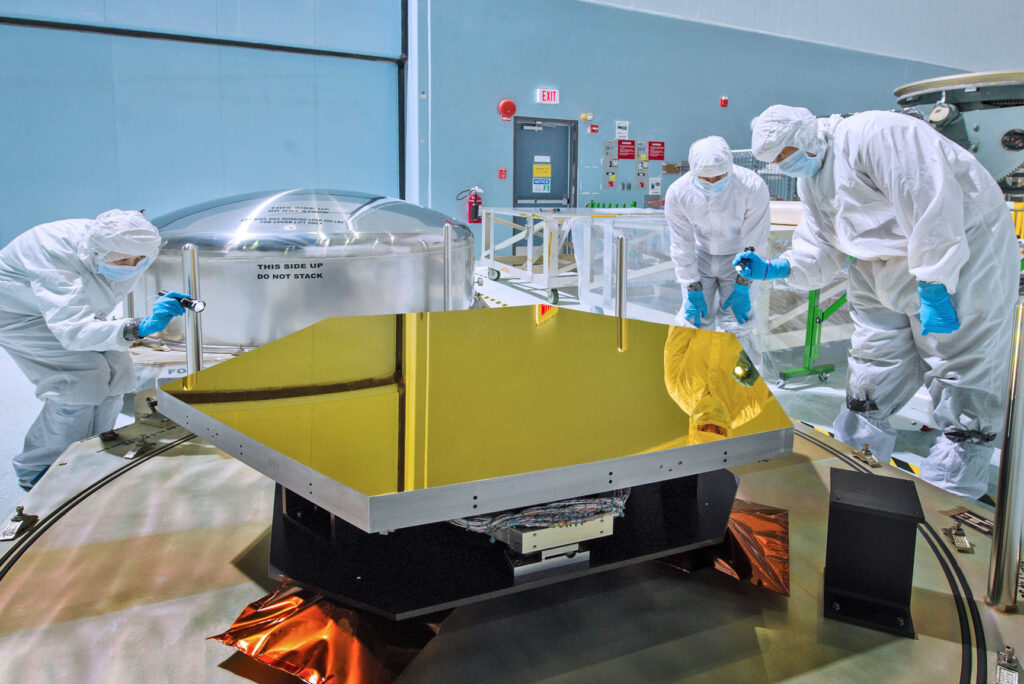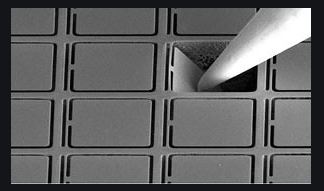Building and launching the JWS telescope
Our May 2020 meeting was a first for us, our first on-line presentation given that our normal meetings could not happen because of the Covid-19 emergency. Member Charles Dixon was already scheduled in May to give a talk on the James Webb Space Telescope and he gamely agreed to do so through video-conferencing . I’m not sure what impressed me most : the technical details Charles gave about the JWST, the range of information he had found out and the clarity of his presentation or his confident delivery as an on-line presenter. It must have been seriously weird sitting at home, just him and his computer, talking to a screen. We did briefly see him before his presentation began and , bless him, he was neatly dressed in a collar and tie.
I seem to have been hearing about the JWST for many years, indeed it was first proposed as long ago as 1996. Many changes and developments later, it should be ready for launch in March 2021. It was conceived as the successor to the Hubble Space Telescope, detecting near infrared and mid infrared frequencies, so it will be less affected by dust clouds. It has a much bigger mirror enabling it to pick up fainter objects which means it will be able to see more distant galaxies, in effect seeing further back in time. This is just one of its aims ; it will also be looking to see how galaxies evolved and how stars and their planetary systems developed.
It is the mirror of JSWT which is its most remarkable feature and it was the centrepiece of Charles’s talk. It is 6.5m across and there is no rocket which could launch such a large item. It is therefore made up of 18 smaller mirror segments which together give the effect of a single mirror. It is designed to fold up for launch and then unfurl when it is in position. Aligning all 18 mirrors to act as one giant mirror is a major engineering challenge. Each of the segments has six actuators which will nudge it into position, the whole process taking two months. The actuators have a travel of 20mm and must perform with just 10nm precision.

Charles described other mind-blowing specifications. The whole telescope has a mass of 2.4 tonnes and this must remain steady within 32nm in operation. It is sensitive enough to detect a candle on the Moon from a distance of 1 million km. This raises another issue : when it is recording very distant and hence very faint objects, it will need a long exposure time (I think Charles mentioned 10 hours). If it is looking at a dense field of objects, it is wasteful to only record from one of them. One of its instruments thus has a micro-shutter device with 250,000 individual windows, each just 100 by 200 microns, barely large enough for several human hairs to fit through. Appropriate shutters are chosen so the telescope can record from many individual objects.

Now all this talk of mirrors must remind us of the Hubble Space Telescope and its faulty mirror. That was repaired by NASA astronauts operating from the Shuttle. Something similar simply won’t be possible for the JWST. It will be “parked” at the Lagrange 2 point behind the Earth ie where the combined gravitational effects of the Sun and Earth on an object are such that it stays in a fixed position relative to the Earth. This is 1 million miles on the opposite side of the Earth from the Sun, giving it a clear view of the Universe beyond with the added bonus that this view will change during a year as it stays fixed behind the Earth as we orbit the Sun. It is though far too distant for any repair mission to be considered. The JWST just has to work! Charles described this as a “white knuckle ride” for the first 6 months after launch.
There was more, much more fascinating detail and I will put some relevant NASA websites at the end. I have done a very hasty bit of research in order to clarify some of my notes from the talk and I came across a part of the mirror assembly called a “whiffle”. I am sure that is a high-spec technical marvel; it just doesn’t sound like one.
For more details, follow these links :
https://www.jwst.nasa.gov/content/about/faqs/facts.html
https://www.nasa.gov/content/goddard/the-amazing-anatomy-of-james-webb-space-telescope-mirrors/
https://www.jwst.nasa.gov/content/about/innovations/microshutters.html
The images are taken from these NASA sites
Talk given by FAS member Charles Dixon
Post written by Katherine Rusbridge
May 2020
